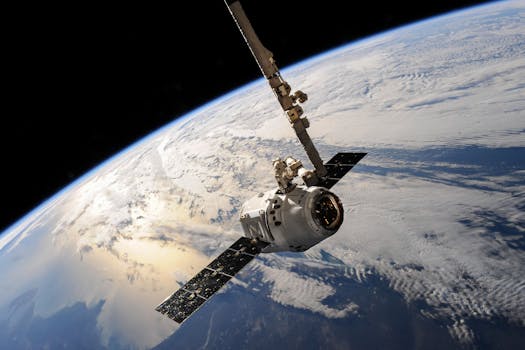
MEO Satellites: Understanding Medium Earth Orbit Technology
MEO satellites, or Medium Earth Orbit satellites, are a type of satellite that operates in an orbit between 2,000 and 36,000 kilometers above the Earth’s surface. This orbit is higher than Low Earth Orbit (LEO) satellites but lower than Geostationary Orbit (GEO) satellites. MEO satellites are used for a variety of applications, including telecommunications, navigation, and Earth observation.
MEO satellites have several benefits over other types of satellites. One of the main advantages is that they have a larger footprint than LEO satellites, which means they can cover a wider area with a single satellite. This makes them ideal for applications such as telecommunications, where a single satellite can provide coverage to a large area. Additionally, MEO satellites have a lower latency than GEO satellites, which makes them suitable for real-time applications such as voice and video communications.
History of MEO Satellites
The first MEO satellite was launched in the 1970s, but it wasn’t until the 1990s that the technology began to be widely used. One of the first commercial MEO satellite systems was the Iridium constellation, which was launched in the late 1990s. The Iridium system used a constellation of 66 satellites in MEO to provide global coverage for mobile telecommunications. Since then, several other MEO satellite systems have been launched, including the Globalstar and O3b systems.
Today, MEO satellites are used for a variety of applications, including telecommunications, navigation, and Earth observation. They are also being used for scientific research, such as studying the Earth’s atmosphere and monitoring climate change. The use of MEO satellites is expected to continue to grow in the future, as they offer a cost-effective and efficient way to provide coverage to large areas.
Applications of MEO Satellites
MEO satellites have a range of applications, including telecommunications, navigation, and Earth observation. In telecommunications, MEO satellites are used to provide mobile coverage to remote areas, as well as to provide backup connectivity in case of emergencies. They are also used for maritime and aeronautical communications, where they can provide coverage to ships and aircraft in remote areas.
In navigation, MEO satellites are used to provide location information and timing signals. The GPS system, which is used for navigation and timing, uses a constellation of MEO satellites to provide location information to users. Other navigation systems, such as the European Union’s Galileo system and Russia’s GLONASS system, also use MEO satellites.
In Earth observation, MEO satellites are used to study the Earth’s atmosphere, oceans, and land surfaces. They can provide high-resolution images of the Earth’s surface, as well as data on weather patterns, ocean currents, and climate change. MEO satellites are also used for disaster response and recovery, where they can provide critical information and communications services in the aftermath of a disaster.
Benefits and Challenges of MEO Satellites
MEO satellites have several benefits, including a larger footprint than LEO satellites and lower latency than GEO satellites. They are also more cost-effective than GEO satellites, as they require less power to operate and can be launched using smaller rockets. Additionally, MEO satellites can provide higher data rates than LEO satellites, making them suitable for applications such as video communications.
However, MEO satellites also have some challenges. One of the main challenges is interference from other satellites and terrestrial systems. MEO satellites can be affected by interference from other satellites in the same orbit, as well as from terrestrial systems such as radar and radio communications. This can cause errors in the signal and reduce the quality of the service.
Another challenge facing MEO satellites is the risk of collisions with other objects in space. MEO satellites are at risk of colliding with other satellites, as well as with debris in orbit. This can cause damage to the satellite and potentially even render it inoperable. To mitigate this risk, satellite operators must carefully plan the orbit of their satellites and take steps to avoid collisions.
